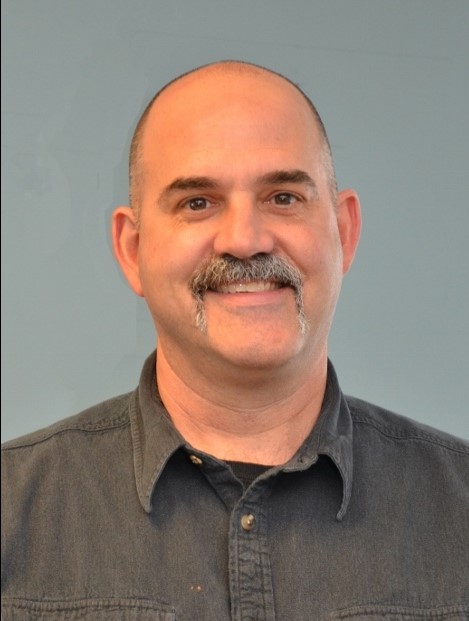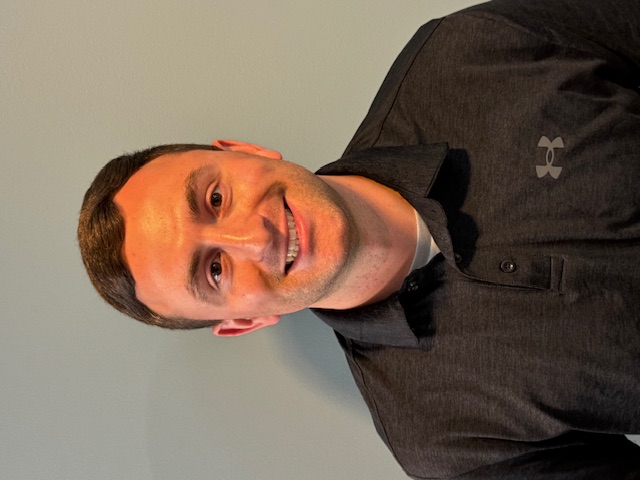Illicit Discharge Detection & Elimination
Minimum Control Measure #3
Code Enforcement Quick Links
Floodplain Development Permit Application Guide
N.Y.S. Department of Buildings Standards and Codes
What Is Illicit Discharge?
Stormwater runoff from urbanized areas can transfer pollutants from the storm sewer system to lakes and streams. In order to protect water quality Federal, State, and Local governments regulate what can go down the storm drain. In most cases, only rain is allowed down the drain. Any discharge to a municipal separate storm sewer that is not composed entirely of stormwater is considered an illicit discharge. These discharges can often be detected when a storm drain has flow during dry weather. As an MS4, the Town is required to prohibit discharges of non-stormwater as well as detect and eliminate any discharges that may occur.
Only clean rainwater and the few exceptions noted below can go down a storm drain. If you see something other than clean water entering a drain or with the potential to enter a drain if it rains, please report it. Any substance entering a storm drain has the potential to harm water quality and needs to be stopped.
To report an Illicit Discharge simply access our Illicit Discharge Reporting Tool at the bottom of this page ~ This tool allows you to submit information regarding an observed illicit discharge or concern such as:
- The date and time the discharge was observed
- A brief description of the discharge
- A mapped location of where the discharge was observed
- A general description of the location
- Relevant photos of the issue
If it’s an emergency or if the situation is deemed urgent, please contact Michael Murphy, CFM at (585)314-9699
Once an illicit discharge had been reported, the Town will investigate to verify the discharge, track down the source, identify the responsible party, and work to eliminate the discharge. The investigation and findings will be documented and included in our Annual Report.
The Illicit Discharge Detection and Elimination minimum control measure consists of Best Management Practices (BMPs) that focus on the detection and elimination of illicit discharges into the MS4. The BMPs describe outfall mapping and updating procedures; the legal authority mechanism that will be used to effectively prohibit illicit discharges; enforcement procedures and actions to ensure that the regulatory mechanism is implemented; the dry weather screening program and procedures for tracing and locating the source of an illicit discharge; procedures for locating priority areas; and procedures for removing the source of the illicit discharge.
- (MS4) Boundary Map of the Town of Canandaigua
- Regulatory Mechanism (Local Law) addressing illicit discharges
- Chapter 172 of Canandaigua Town Code - Illicit Discharge Detection and Elimination
- Outfall Structure Maps (within MS4 Boundary):
- LiDar - Digital Elevation Model GIS Generated Watershed Maps:
- On Monday June 20, 2016 the Town of Canandaigua adopted Local Law No.5 of the year 2016, creating Chapter 170 - Stormwater Management to the Town Code to meet the requirements of Minimum Control Measures of the SPDES General Permit.
- On Monday June 20, 2016 the Town of Canandaigua adopted Local Law No.6 of the year 2016, creating Chapter 172 - Illicit Discharge Detection and Elimination to the Town Code to meet the requirements of Minimum Control Measures of the SPDES General Permit.
- The Town of Canandaigua has mapped and inspected the majority of the outfalls within the MS4 area. Inspection files are located within the Outfall Database & Inspection folder, located within the Town of Canandaigua Development Office. The outfall inspection and location data are stored in a data file, and are georeferenced into ArcGIS.
- The MS4 Program Manager currently maintains the mapping and inspection database.
- Using the existing outfall mapping, the Town of Canandaigua will conduct an outfall reconnaissance inventory during routine maintenance visits, addressing each outfall at least once every three years, with reasonable progress each year.
- Maintain a prioritized list of outfalls for inspection, ranked as follows:
- Outfalls in which previous inspections indicated evidence of illicit discharge such as dry weather discharge, color, odor, etc. or outfalls in areas where repeated complaints were received.
- Outfalls in heavy industrial or commercial areas or construction sites
- Outfalls in environmentally sensitive areas.
- Outfalls which directly empty into Canandaigua Lake.
- Outfalls in which previous inspections indicated structural deficiencies.
- The Town of Canandaigua Stormwater Management Officer will ensure that outfalls are being inspected; and the inspections are documented, and will update outfall mapping forms for all outfalls that have been altered since mapping was established.
- The Town of Canandaigua Stormwater Management Officer will periodically review the ordinance and adjust as necessary to maintain compliance with NYSDEC standards and requirements.
- The Town of Canandaigua will update its current inspection plan to detect illicit discharges by conducting routine visual inspections of every mapped outfall. The plan will set criteria for the inspection process.
- A future goal of the Stormwater Program is to define the drainage areas about each outfall. Having the drainage areas defined is helpful in tracking down illicit discharge sources. The Town has purchased software, and drainage area mapping is a goal in 2017.
- The Town of Canandaigua Stormwater Management Officer will investigate and confirm the source of pollutants when water quality issues arise due to public complaints or by scheduled inspection of outfalls and implement enforcement action per the Local Law to prohibit illicit discharges, activities and connections to separate storm sewer system.
- The Town of Canandaigua Stormwater Management Officer will annually update non-stormwater discharge list as necessary such that no exempt stormwater discharge is a substantial contribution of pollutants.
- NON-STORMWATER DISCHARGE LIST:
- Waterline flushing
- Landscape irrigation
- Diverted stream flows
- Discharges from potable water sources
- Foundation and footing drains
- Air conditioning condensate
- Irrigation water
- Water from crawl space and basement sump pumps
- Lawn watering runoff
- Water from individual residential car washing
- De-chlorinated swimming pool and water reservoir discharges
- Residual street wash water
- Discharges or flows from fire fighting activities
- Any SPDES permitted discharge
- The Canandaigua Lake Watershed Council has historically installed storm drain markers on existing catch basins. The Town of Canandaigua will continue to support and take part in the activities of the CLWC.
- The Town of Canandaigua will continue to develop a spreadsheet containing catchbasin locations and maintenance history.
- The Town of Canandaigua will continue to inspect and clean catch basins on a rotating basis. The Town has recently purchased a street sweeper with a catch basin pump/vacuum, which will aid in the inspection and cleaning.
- Through the minimum reporting requirements the Town of Canandaigua will document its progress in implementation of BMPs and measurable goals.
While rain is only allowed down the storm drain, there are certain discharges permissible by the Town's MS4 Permit that have been determined to not contribute substantial pollutants to the environment. These allowed non-stormwater discharges include:
Water Line Flushing
Landscape Irrigation
Diverted Stream Flows
Rising Ground Waters
Uncontaminated Ground Water Infiltration
Uncontaminated Pumped Ground Water
Discharges from Potable Sources
Air Conditioner Condensate
Irrigation Water
Springs
Water from Crawl Space Pumps
Footing Drains
Lawn Watering
Individual Car Washing
Natural Flows from Riparian Habitat and Wetlands
Dechlorinated Swimming Pool Discharges
Street Wash Water
Discharges or Flows from Fire Fighting Activities
Fire Hydrant Water Line Flushing
Illicit Discharges can be most easily identified when flow is observed during dry weather.
These flows can contribute pollutants to the storm sewer system by direct or indirect discharge.
A direct discharge is one that enters the storm sewer directly through a pipe or drain, is usually continuous or intermittent, and is usually caused by an unintentional sewage cross connection or an intentional bypass known as a straight pipe.
An indirect discharge is one that is generated outside the storm sewer system and enters through an inlet (storm drain) or joints in pipes and can be intermittent or temporary. These typically enter the storm sewer system via groundwater seepage after rain events, spills, dumping, outdoor washing activities, or irrigation runoff.
Activities that can produce a discharge include:
Outdoor Washing Activities: Vehicles, Surfaces, Equipment, Buildings
Parking Lot Maintenance
Vehicle/Equipment Fueling
Vehicle Maintenance/Repair
Landscaping/Grounds Care
Sewer Blockage/Maintenance
Construction
Erosion
Information for this section provided by:
Brown, E., & Caraco, D., (Center for Watershed Protection) & Pitt, R. (University of Alabama) (2004, October). Illicit Discharge Detection and Elimination: A Guidance Manual for Program Development and Technical Assessments. EPA Cooperative Agreement.
https://nepis.epa.gov/Exe/ZyPURL.cgi?Dockey=20017KFK.txt
OFFICE HOURS
Monday - Friday: 8:00am - 4:00pm
Mailing Address:
5440 Route 5 & 20 West
Canandaigua, NY 14424
(585) 394-1120
DEPARTMENT CONTACTS




